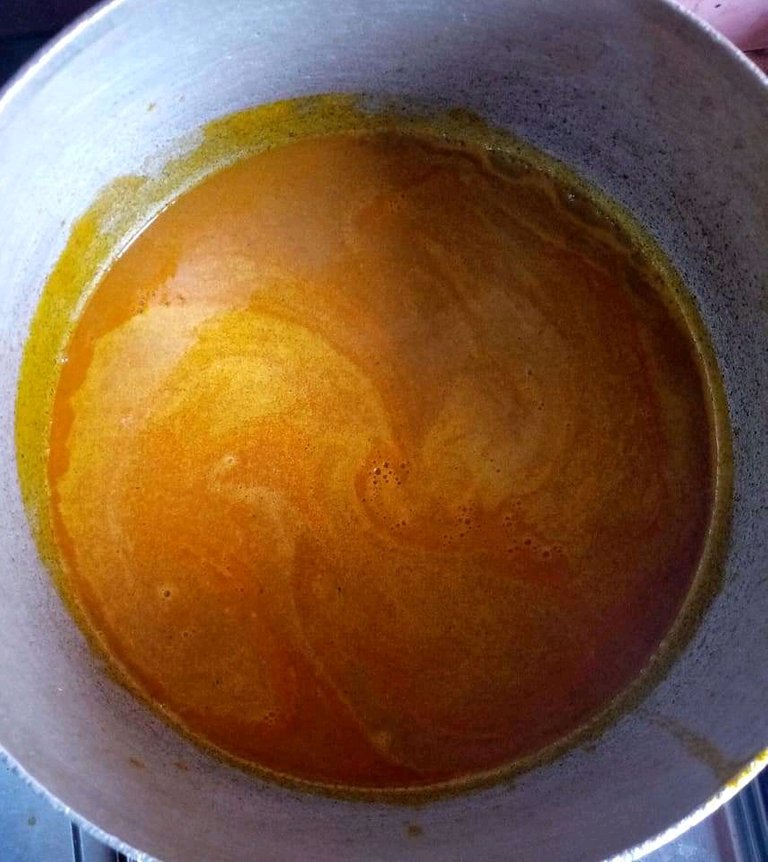
I recently wrote on the differences between palm kernel oil and palm oil, with a focus on palm kernel oil's uses and health benefits.
Many people mistake palm oil for palm kernel oil. Both oils are extracted from the palm fruit, and both can be used for cooking. They have similar properties, but the extraction process is different.
@lemouth stated that he hasn't heard of Palm Kernel Oil; nevertheless, he may have come across it and not realized it was palm kernel oil; it looks just like palm oil but isn't as thick in color; in fact, the odur is different from palm oil. Furthermore, the extraction also is cost-effective and simple.
Like I said the process of extraction is simple and straightforward, one of my colleagues who is from the Eastern part of Nigeria and is very familiar with palm kernel oil taught me how to extract the oil. In fact, one of their traditional foods (Banga) is made with palm kernel oil. She showed me how to use the extracted oil to cook the Banga soup.
In today's blog, I'll walk you through the steps of extracting palm kernel oil from palm fruit. This oil can be used to make Banga soup, or see my post on Palm Kernel Oil's uses.
Requirements
The Palm Fruit
Mortar and Pestle
Water
Step 1: Wash and rinse the palm fruit (nuts) with clean water to remove the dirt, then place the palm fruit in a medium-sized clean pot. Add clean water just enough to cover the palm nuts in the pot and cook on a high medium heat for 20 minutes.
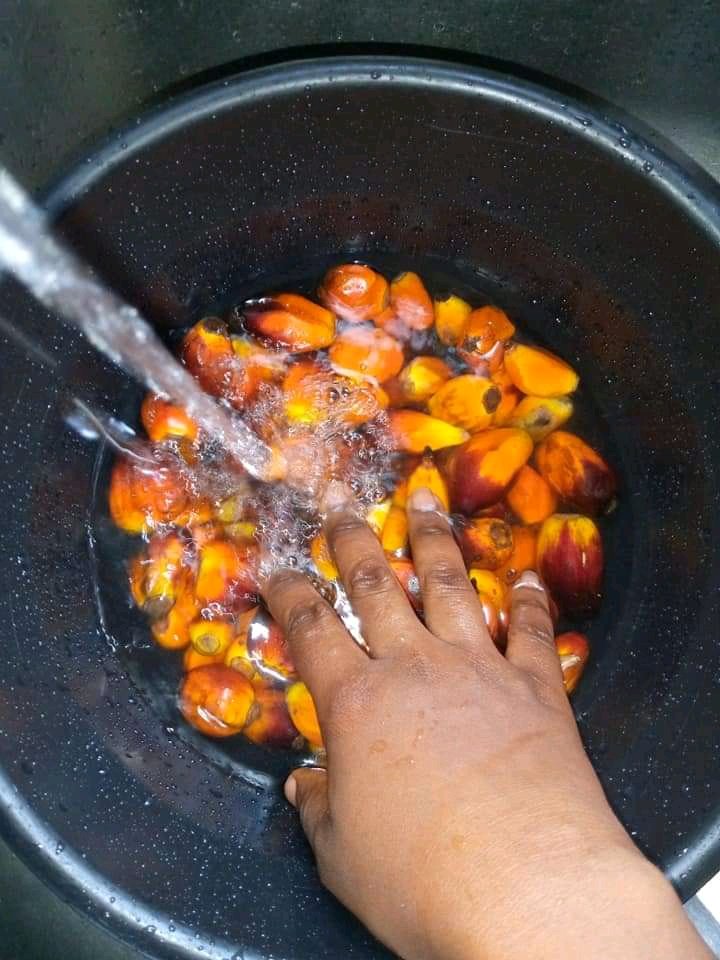
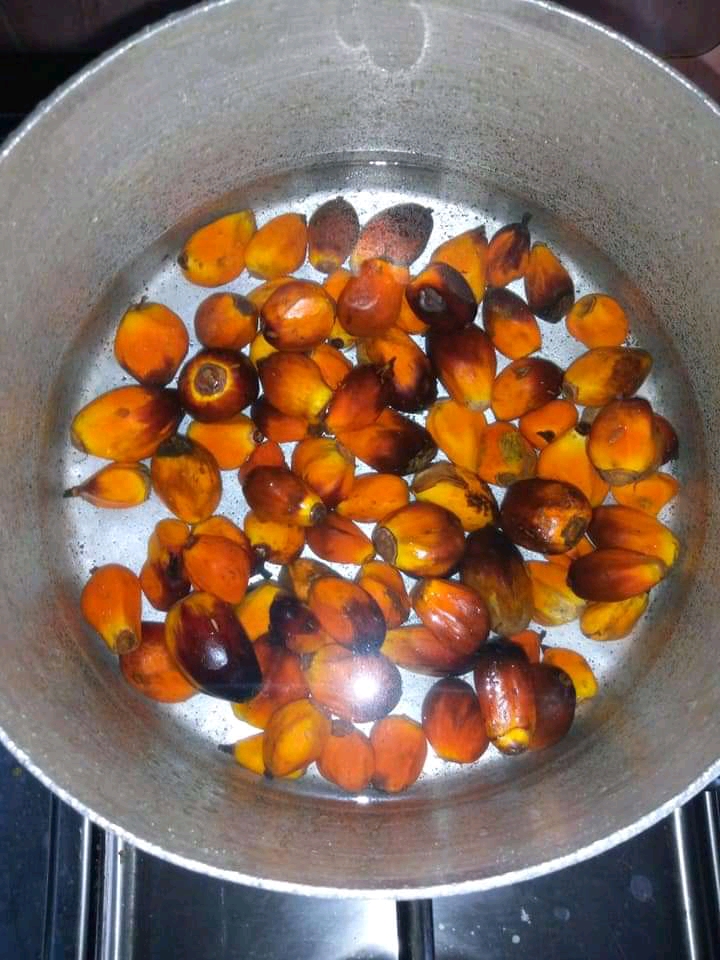
Step 2: Boil till the fruit get soft, you can confirm this by bitting one of the palm nut, if it's soft then it's ready. Remove the palm fruits from the boiling liquid and pound them with a pestle in a mortar until the skin separates from the kernel.
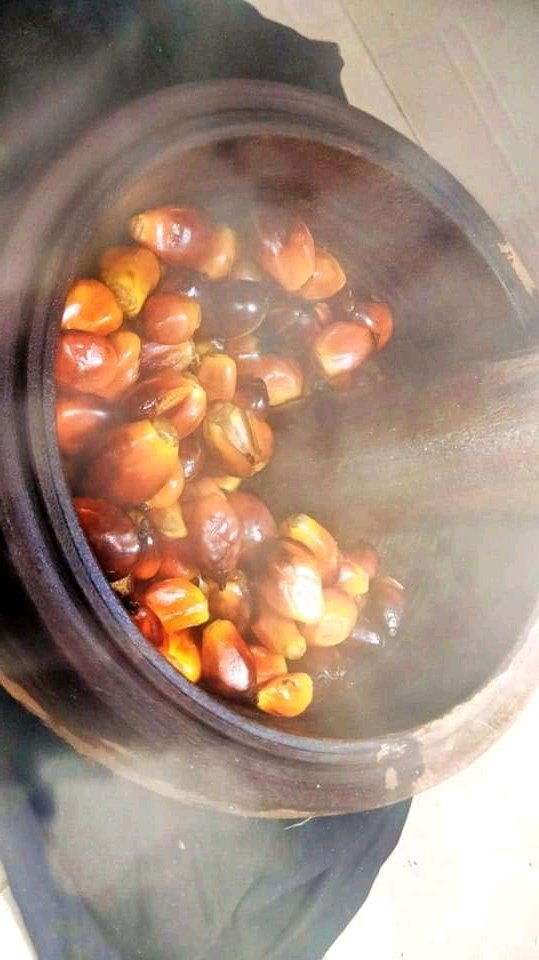
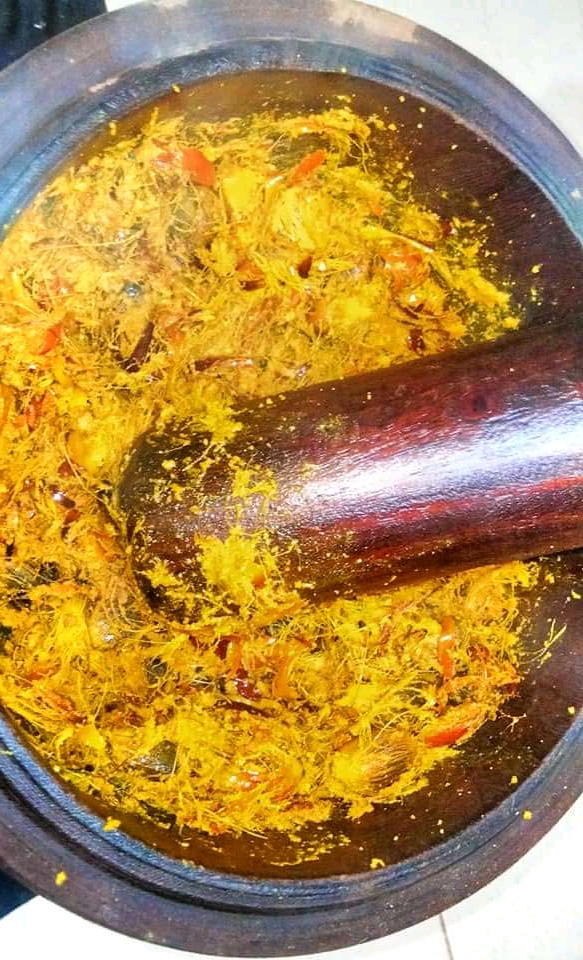
Step 3: Move the palm nut seeds to another large bowl once they have become mushy. Pour some water over the palm nuts, squeeze them, and pour them into a separate bowl. The objective is to clean the seeds (which are all mashed up from pounding)
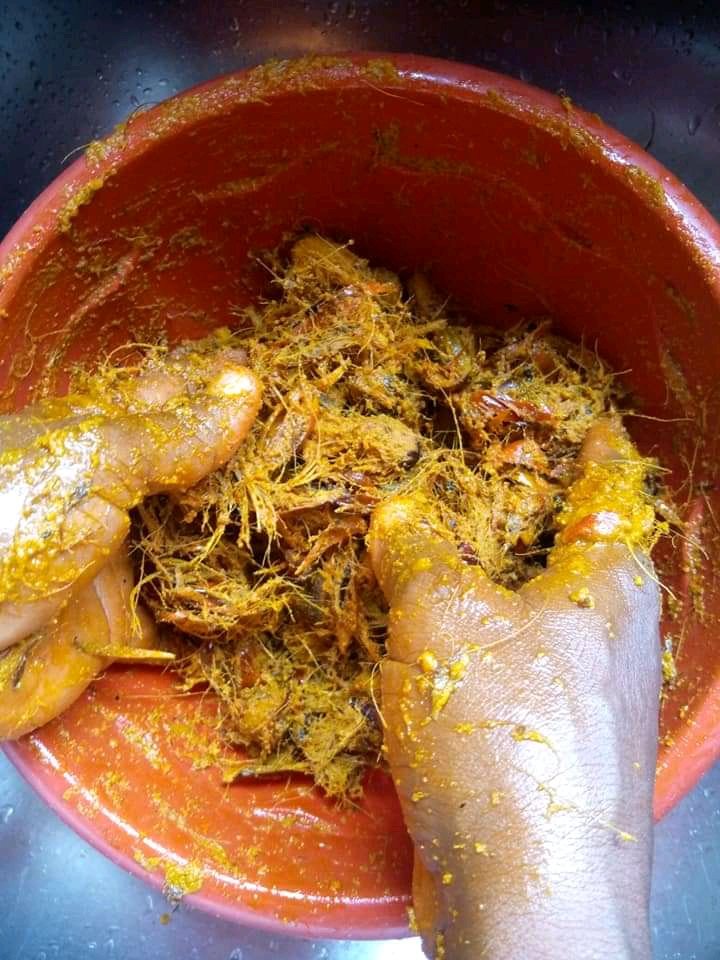
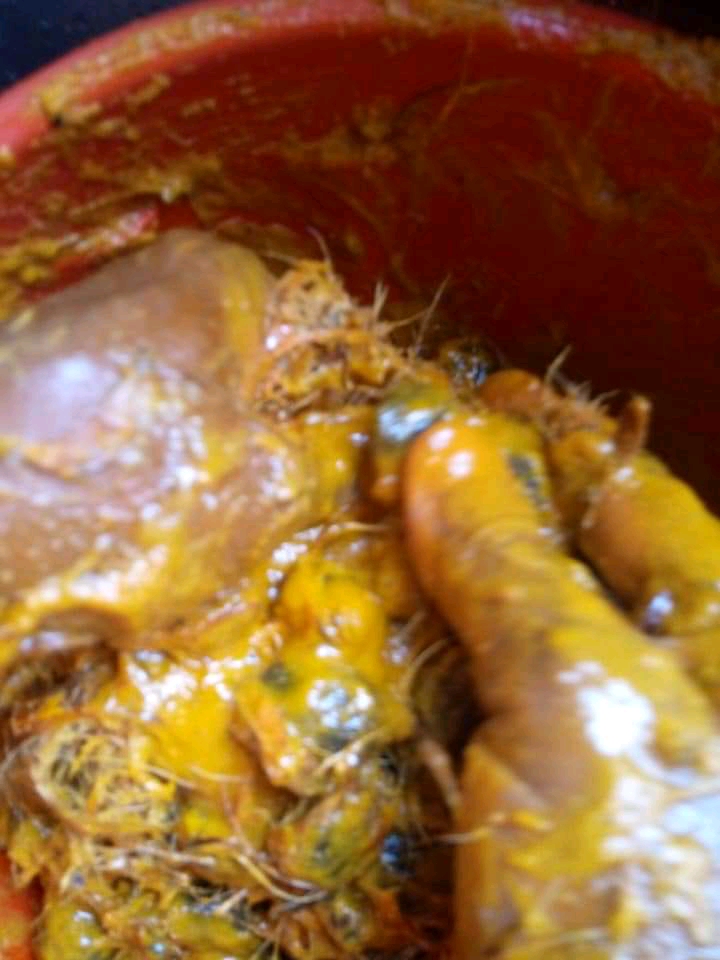
Step 4: Continue until the water appears to be a little lighter. Sieve and separate the shaft and the nuts.

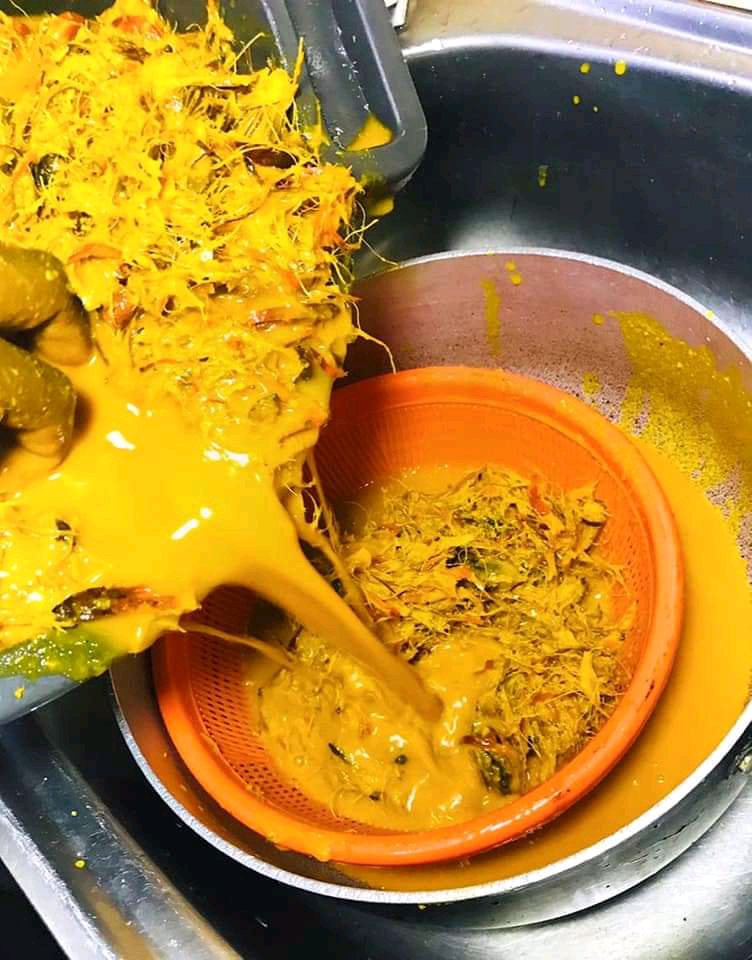
Step 5: The shaft and the palm nut gotten after sieving also has it own usefulness... That's another topic for another day.
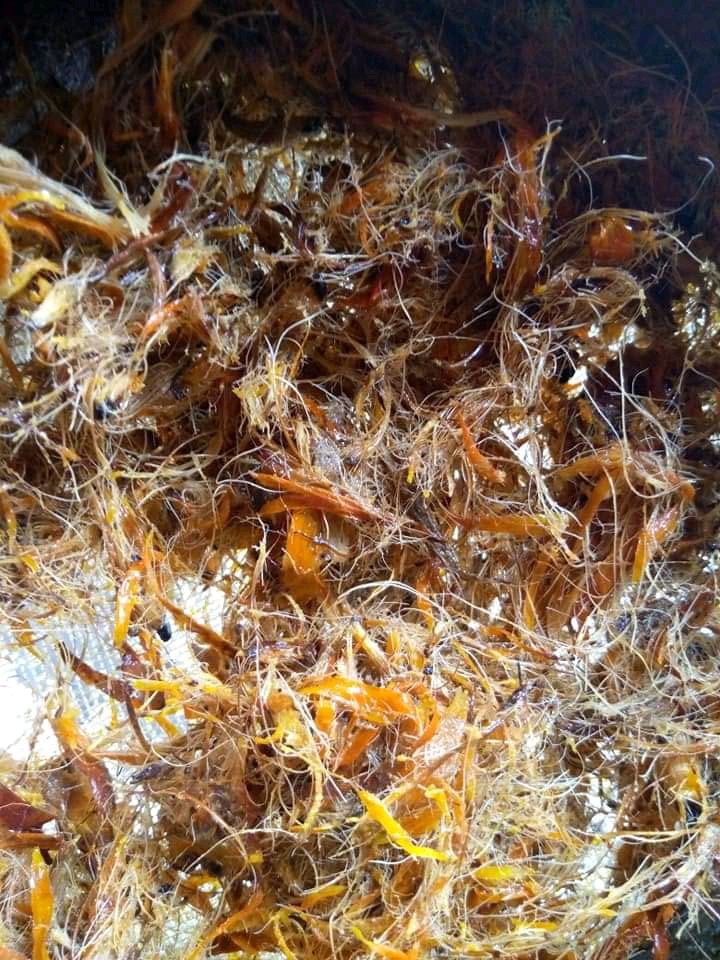

Step 6: Pour the liquid in a clean bowl, remove any shaft or any particles with a clean spoon, now pour into another clean pot and boil on a high medium heat for 30 minutes to an hour.


Finally the oil is ready, you can just jump to making your Banga soup or remove the oil from heat and set it aside to cool before using it to make Banga soup. The oil is also used in soda and soap making.
Note: This is a homemade oil that is 100 percent natural and contains no added chemicals. The nutrients are all natural and beneficial to your health, so make sure you try it in a sanitized and germ-free environment.
I used the palm kernel oil extracted to prepare the Banga soup, which I'll show you how to make in a next blog; keep tuned because you won't want to miss it 😁😃.
I hope this post was helpful to @lemouth and that it answered some of his questions.
Thank you so much for reading, God bless you all 🥰

Thank you for visiting my blog, I hope you have learnt one or two things from my content today, you can follow me to for more quality contents that will learn one or two things from you can check out My Introduction Post To know More About Me and If you find my content useful or interesting, please appreciate my work by leaving a comment, upvote, and probably rehive it so that more users can see it

